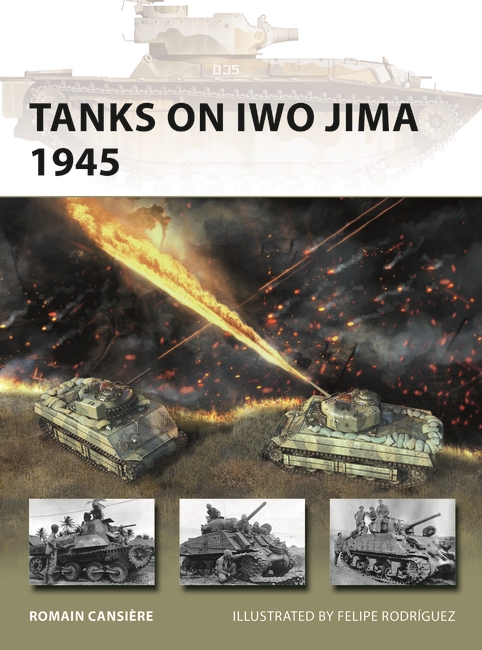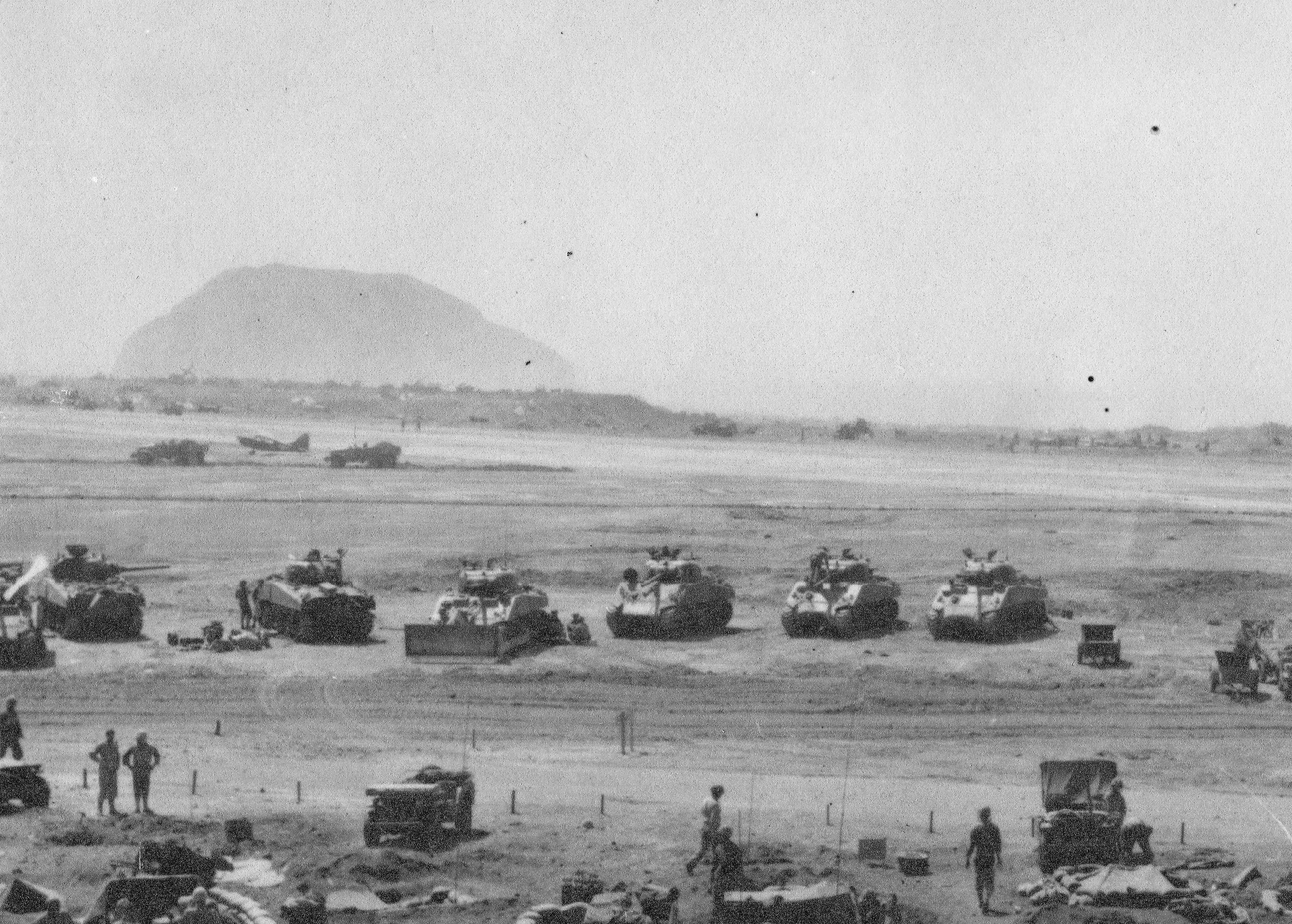
By February 1945, three US Marine divisions were committed to take Iwo Jima, a Japanese possession located some 1,200km south of Tokyo.
The spearhead of the American invasion force was the US Marine tank-infantry team, proven by months of fighting in the Pacific. With three tank battalions deployed mustering some 150 tanks, Iwo Jima would see the largest tank force ever assembled in battle by the Marine Corps in WW2.
Since the American forces broke through the Japanese inner defensive ring in the Marianas, the overall Japanese strategy significantly evolved. On Iwo Jima, the Japanese defenders prepared some of the most formidable fortifications of the Pacific War. The aim was to make an American victory as costly as possible. Land mines, mortars, anti-tank guns and artillery pieces were cleverly concealed in the rugged terrain of the volcanic island. These changes in doctrine forced the marine tank-infantry team to adapt, giving up the conventional methods to adopt most suited, but unorthodox, tactics.
Despite the myriad of land mines and guns utilized, the Japanese anti-tank doctrine still importantly relied on infantry-borne explosives.
Japanese tank hunters aimed their explosives at vulnerable parts of tanks, forcing American crewmen to improvise protection on their vehicles.
The first rudimentary designs of field expedient armor were born in the wet jungles of Bougainville in November 1943 and were continually improved throughout the Pacific war, culminating on Iwo Jima in 1945. Iwo would see some of the most elaborated designs that used lumber, steel and even concrete to protect sherman tanks.
In terms of Japanese armor, the 26th Tank Regiment was fielded in order to increase the Iwo Jima garrison. Their defensive actions, though limited due to several factors such as terrain, obsolete equipment and logistic issues, is generally misunderstood.
It is erroneously believed that the 26th Tank Regiment lost all its tanks en route to Iwo Jima by mid-1944 and that only 22replacement vehicles were present when the Americans landed.
The unit was actually loaded on two separate ships of which one was sunk, but the other effectively delivered one tank company and the regiment's Type 90s 75mm field guns.
In addition, it is also commonly accepted that Japanese tanks on Iwo Jima fought a static, entrenched, defensive battle.
Analysis of Japanese sources indicates this is only partially correct.
During the first couple of days following the American landing, Japanese tanks were indeed sheltered in prepared positions. But with the rapidly evolving battle situation and fast American advance, the Japanese began using the mobile potential of their tanks against the Marines in local counter attacks.
As was the case with anti-tank guns, the Japanese also frequently moved their tanks at night toward new emplacements and thus created confusion in American ranks.
The defensive actions of the vehicles of the 26th Tank Regiment ended up by early March in what was known as Cushman's Pocket. When the regiment's tanks were all destroyed or abandoned, the 26th Regiment's soldiers fought afoot with only light weapons and explosives left until after the island was reported captured by the Americans.
How did Japanese and American tanks performed during the battle? How effective were Japanese anti-tank weapons and doctrine? And how efficient were the USMC additional tank armor? How successful were other support vehicles such as armored amphibians and half-track tank destroyers?
Tanks on Iwo Jima, 1945 highlights the role of both, Japanese and American armor in the legendary battle of Iwo Jima.

3rd Tank Battalion shermans stationed on airfield number 1 on Iwo Jima in 1945. Mount Suribachi is visible in the background. (NARA)



Comments
You must be logged in to comment on this post. Click here to log in.
Submit your comment